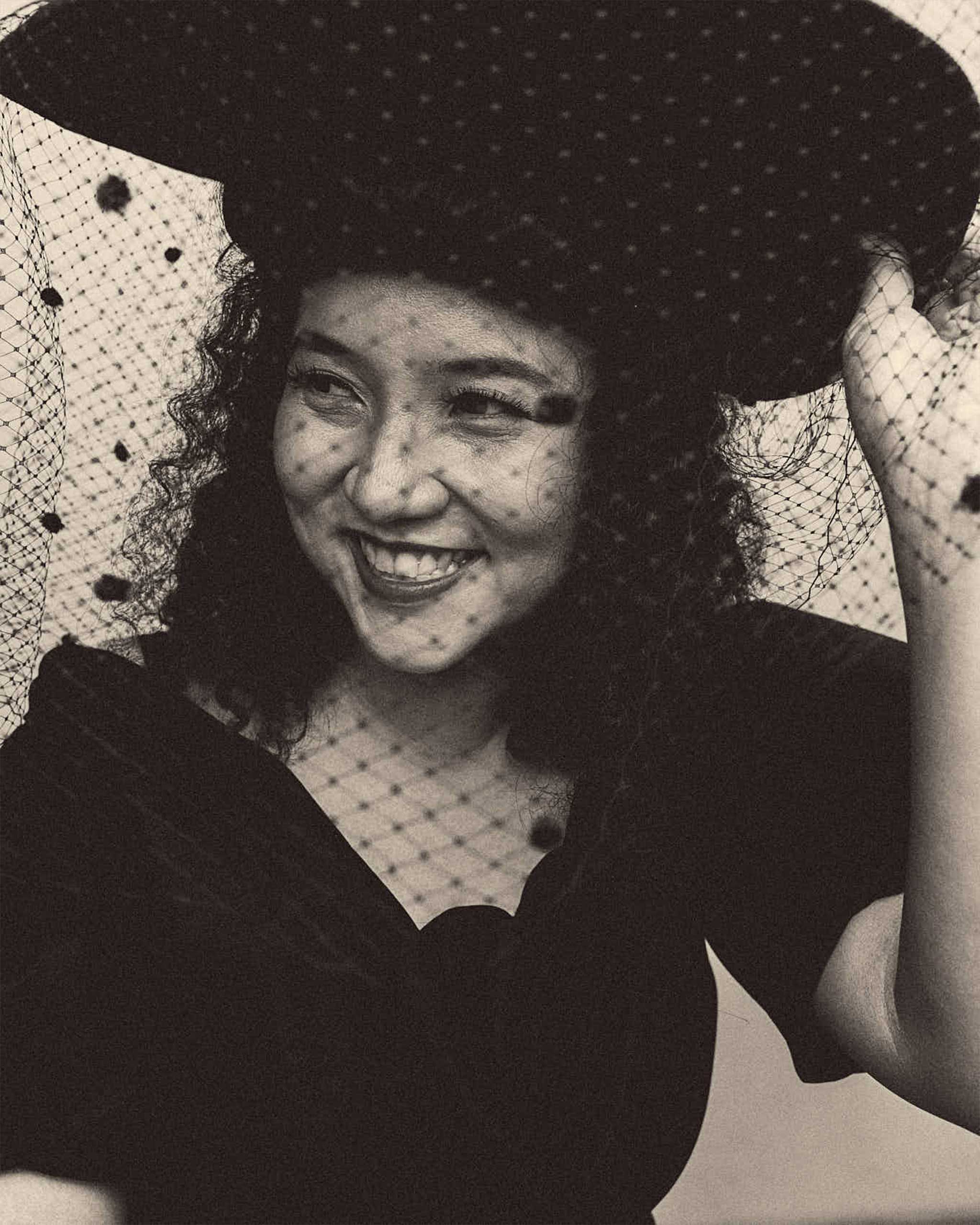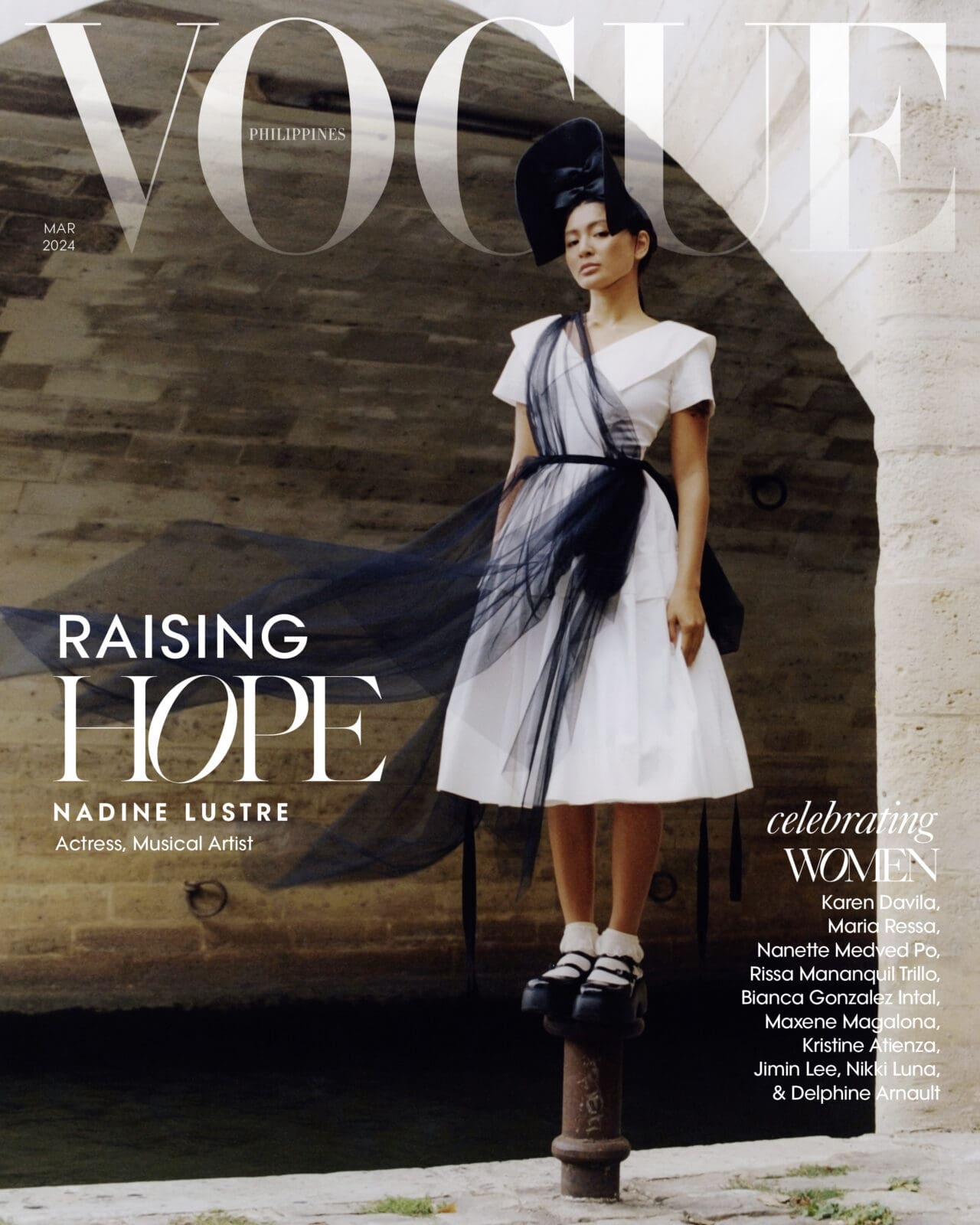Photographed by JV Rabano
Nadine Lustre finds a serene moment among willow trees by the river Seine wearing Mich Dulce’s latest pieces as a Vogue Philippines cover star.
Mich Dulce appears in Vogue Philippines’ March 2024 issue, themed “Raising Hope” in the spirit of International Women’s Month. Visit vogue.ph everyday this month for daily features on inspiring women, as nominated by the people whose lives they’ve changed.
Mich Dulce knows taxidermy. She’s learned how to make gloves. She has mastered the craft of corsets and hats, and there’s a good chance you already knew that. Most recently, at Central Saint Martins, she took up a course on latex.
“I have a fascination for learning specific things. I like learning funny things, things people don’t know how to do,” says the designer, milliner, corsetiere, musician, and feminist. It’s a mouthful. But that’s Mich. A learner at heart, a lover of niches, and a follower of curiosities. It’s why her shiny new interest managed to slither into her Bench Fashion Week 2023 collection, her first full-look, ready-to-wear foray in 15 years.
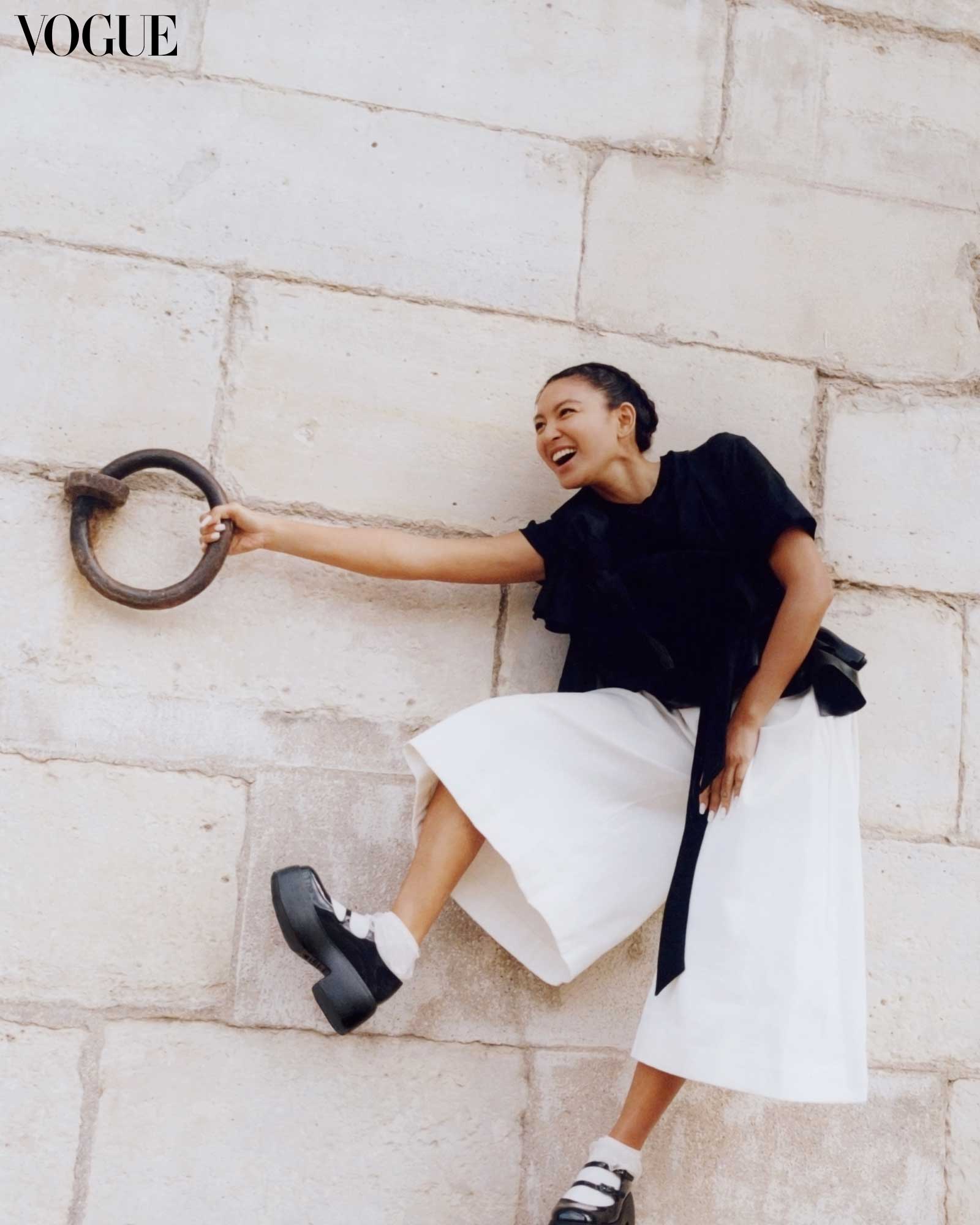
Despite her extended hiatus, the Bench Fashion Week showcase was a long time coming. When Noel Manapat, the retail giant’s creative director, invited Mich to return to the runway, she described it as “the perfect timing, because it was at a period that I really missed making clothes.” Until then, she had focused on designing headpieces for a decade and a half. She occasionally dabbled in bridal and corsetry too, but hadn’t produced for the scale of a fashion show.
Her collection (“I don’t really name the collections, it’s not in my DNA to do that.”) was a look-back to her body of work, a chronicling of her aesthetic that, she believes, hasn’t changed drastically. Referencing her last runway presentation in 2002, she observes how the clothes she made then are clothes she would still wear now. The ruffled and draped elements of Mich’s aughts figure seamlessly into her pieces at present.

The designer’s resonance with past work is guided by a proclivity toward the bygone in general. Mich’s work is informed by research, and she often finds herself circling back to historical silhouettes. In 2002, her collection was inspired by the Amish rules of dress—for women, long hems, full skirts, and aprons, to name a few. Those codes resonate with her still, so she applied them to her BFW assemblage.
Then there was the most difficult part of the collection: latex. The material was highly delicate to the point of constant, accidental ripping. It couldn’t be sewn, only bonded. So how would they drape, and how would these drapes hold their place?
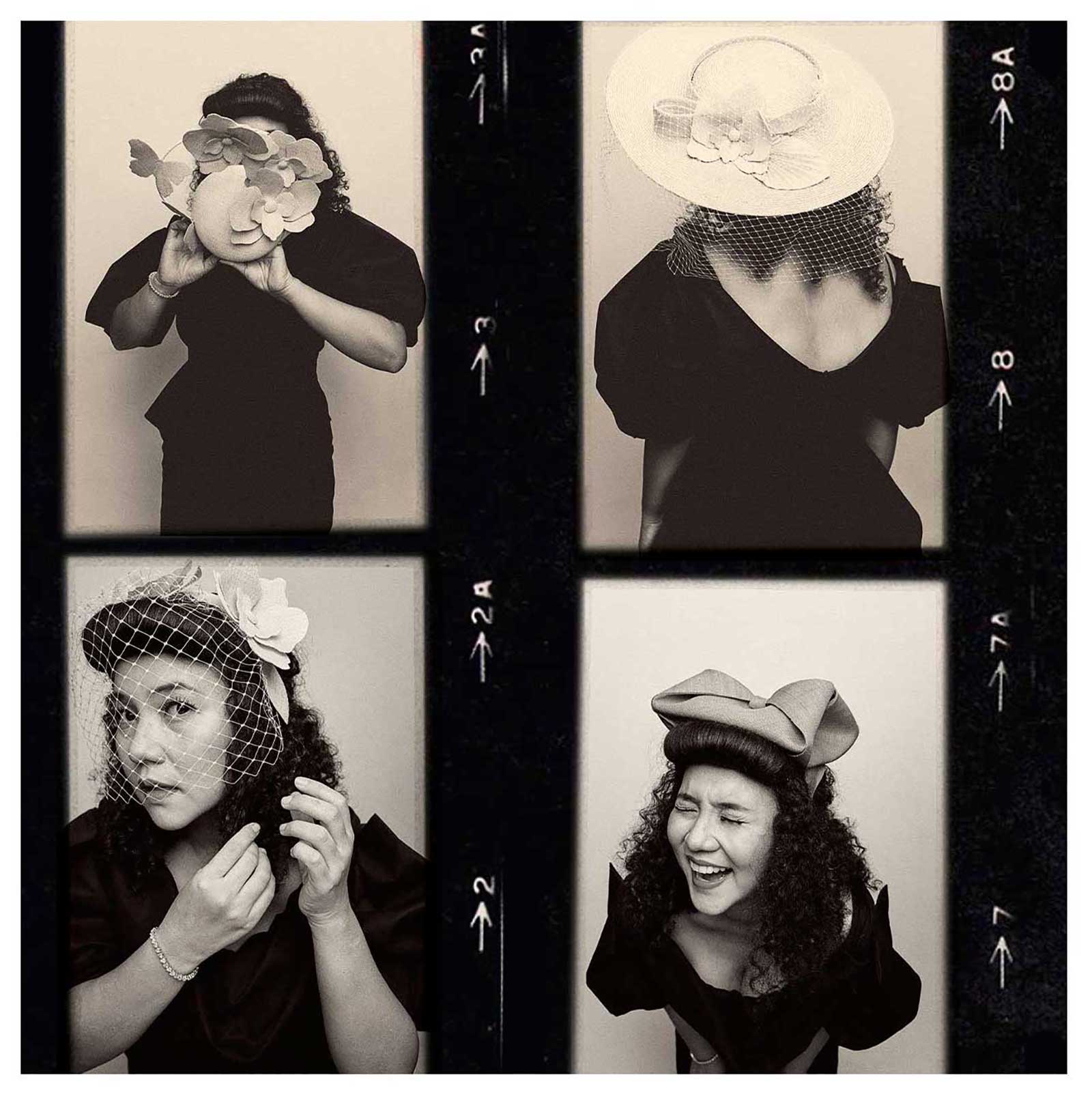
Mich and her team of seven attempted it over and over. The designer makes all the first samples herself, and her process relies on the tactile process of draping on a bodyform or model. Rough, sparse strokes are the extent of her sketching. She laughs as she procures a sample, a piece of paper the size of her hand, its jagged edges a testament to its disposability, to the rate at which her designs change. At BFW, minutes before the models walked out to the audience, she was still cutting up some of the clothes.
In the end, they discarded multiple latex pieces because of their designs. Among those that remained: a draped dress she describes as “liquid,” wide trousers, and a ruffle harness. The struggle was achieving a counterintuitive approach to the material, which is often associated with sex and seduction. “There has to be an innocence with the latex,” the designer insisted, which is why none of them are close to the body.
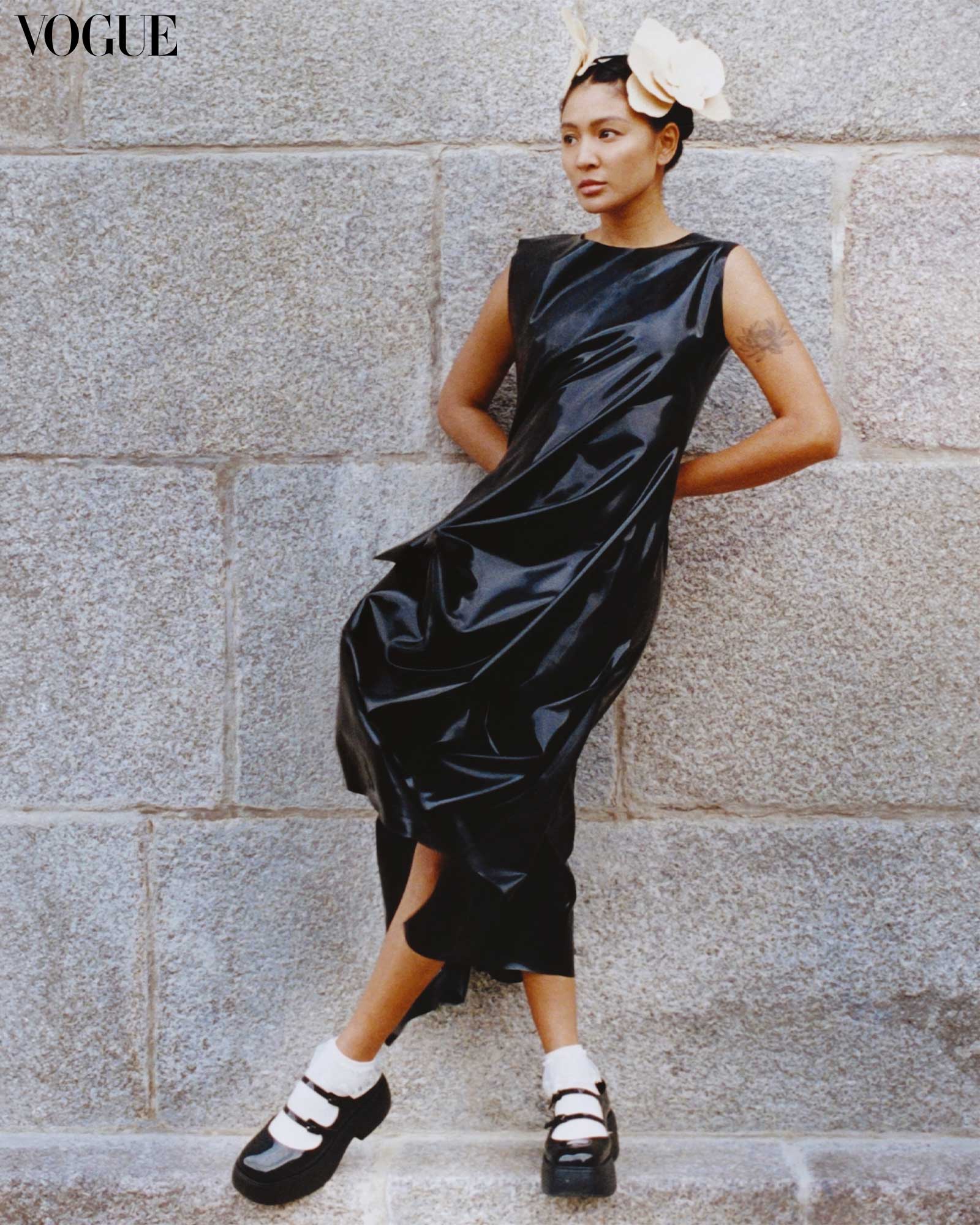
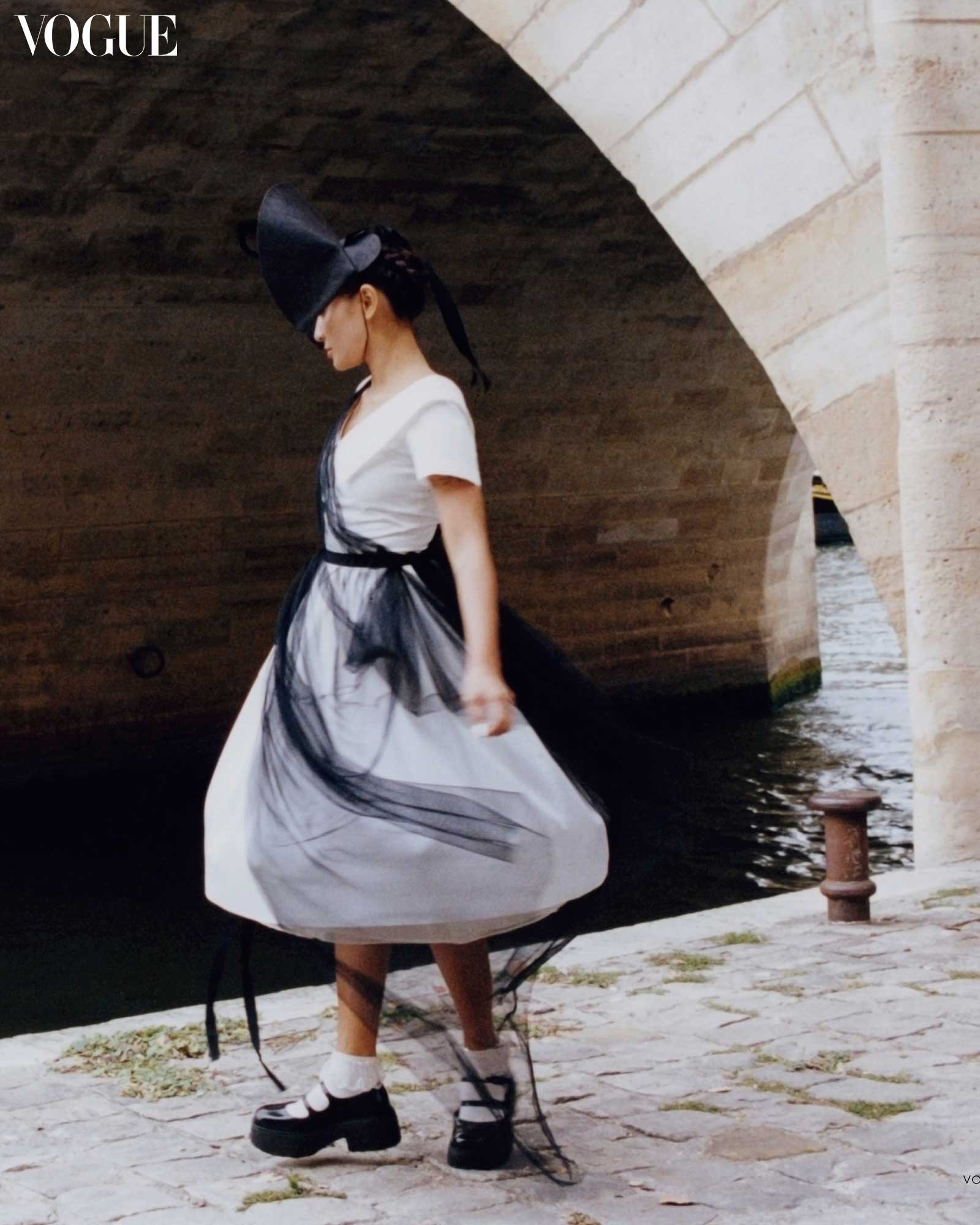
The emphasis on de-sexualizing her garbs didn’t end there. On the day of the fashion show, Mich was backstage, reminding her models, “Walang kekembot ha!” [“No swaying of the hips, okay!”]
“Fierce is like the opposite of me!” she exclaims during our call. “Kailangan little girls lang na pupunta sa ballet,” [“You just need to channel little girls on the way to ballet”] she laughs, recalling her instructions to the models.
When Mich’s girls, directed by Robby Carmona, sauntered onto the runway, their toes landed on the ground before their heels, producing a walk that mimicked a child’s tentative steps. They strode cautiously to the sound of an eerie lullaby, a soundtrack to the ethereal playtime scene.
It’s this same delicate femininity channeled by another muse in Paris. One morning, on an empty walkway by the Seine river, Nadine Lustre stood underneath an overgrown willow tree. Amid a bustling fashion week stint (her first, no less), the acclaimed musician and actress returned to nature for a sunny, then rainy, then sunny shoot, all the while donning Mich’s latest creations. Says Vogue Philippines fashion director Pam Quiñones, Nadine touched Mich’s garments, appreciating the way they hug and billow at once.

Nadine is an environmentalist, and Mich shares this advocacy too, especially when it comes to sustainability and slowness in fashion. The designer admits that early on in her career, she gravitated towards fabrics that catered to the ready-to-wear system globally, which are often composed of synthetic materials.
Presently, she understands the value of investing in the best fabrications, explaining, “The more luxurious the material, the longer it will last. Which again ties to slow fashion, to sustainability.” Her BFW assemblage makes use of Philippine piña, Italian linen, and Japanese twill. Even the latex is proudly eco-friendly; the biodegradable fabric comes from natural rubber that grows on trees.
As for the hats, they’re made of T’nalak, as they always have been. “An important part of the work that I do is meeting the people who weave my stuff,” she narrates. When visited her weavers in South Cotabato to show them her hats, which were made with their fabric, the community was ecstatic. They were overjoyed to discover it was worn on the head. For them, Mich says, “to put T’nalak on the head uplifts [the] community, [their] beliefs.”
“It’s really important to me to do that.” She quickly adds, “Not to say that, you know, their craft needs to be uplifted. But giving the recognition to their craft that they deserve, as makers and craft artisans. We want to make sure that people recognize it globally that… we made this.”
Phtographed by JV Rabano. Photographer’s Assistant: Choi Narciso; Aaron Carlos.
- Odd Romance: A Serene Moment in Paris with Nadine Lustre
- The Life & Times of Karen Davila: Representation, Breaking Barriers, and Paying It Forward
- Bianca Gonzalez Intal and Rissa Mananquil Trillo On the Power of the Platform
- The Good Fight: Nobel Laureate Maria Ressa on How to Stand Up to Dictators
